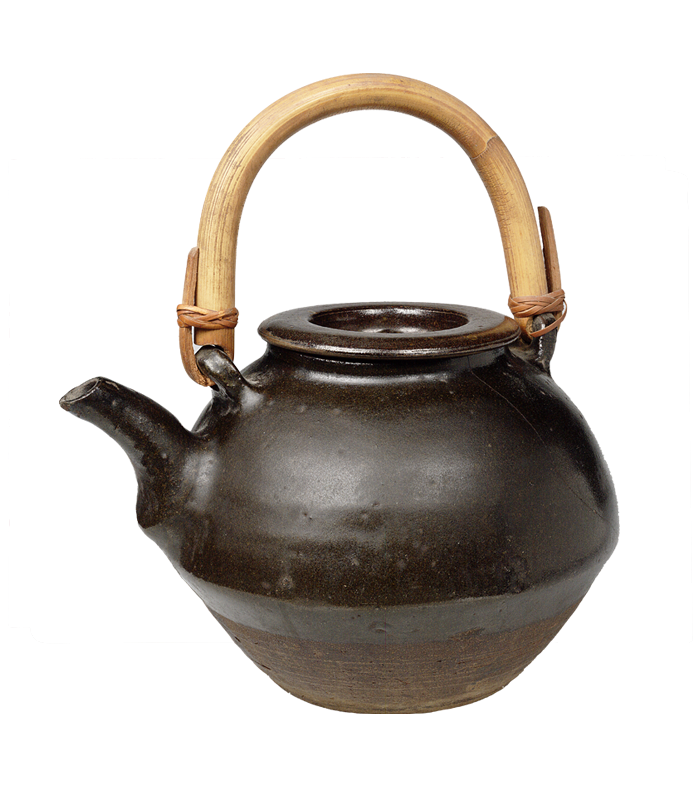“People have the perception that Mingei is just brown pots,” says Roisin Inglesby, a curator at the William Morris Gallery in London. But Mingei — a term invented a century ago from the Japanese minshūteki kōgei, meaning “ordinary people’s craft” — is, Inglesby explains, much more than that. And a new show opening at the gallery, Art Without Heroes: Mingei, aims to demonstrate its diversity, featuring textiles, furniture, homewares and decorative items alongside ceramics.
The Mingei movement, established in Japan in the 1920s by philosopher Yanagi Sōetsu with potters Hamada Shōji and Kawai Kanjirō, responded to rapid industrialisation by refocusing value on everyday “folk craft”, encouraging both its recognition and continued production.
Proponents of the movement, who also included British potter Bernard Leach, looked to historic objects made by anonymous craftspeople, particularly Joseon-era ceramics from Korea, and elevated them as art.
Since Mingei’s genesis a century ago, it has seen waves of revival and popularity, both in Japan and abroad. “This is not about Japanese-ness — this is the art of everybody,” says Yuko Kikuchi, head of academic programmes at the V&A, who worked with Inglesby on the exhibition and contributed a chapter to its accompanying book.
Mingei movements emerged around the world, says Kikuchi. The early 20th-century “studio pottery” movements within the US and UK — in which potters came together to produce functional ceramic objects — shared a similar spirit to both Mingei and Arts and Crafts.


In India, Sardar Gurcharan Singh, who trained in Japan before founding the Delhi Blue Pottery, catalysed his country’s own studio pottery movement; one of Singh’s blue ceramic vessels is featured in the Art Without Heroes exhibition. Canadian potter John Reeve created a community of Mingei-style potters in Canada, while New Zealand potter Len Castle, who had worked with Hamada in Japan, pioneered his country’s studio pottery movement.
Yanagi, Hamada and Leach travelled to the US in the 1950s to popularise the Mingei movement, becoming known as the “Three Musketeers” and, as Kikuchi writes in the exhibition book, triggered a North American regional Mingei movement, including the “Mingeisota” group in Minnesota, developed by artist-potter duo Alix and Warren MacKenzie.
Kikuchi believes we are currently witnessing a new Mingei revival, within new inclusive, community-centred frameworks, that nonetheless shares the movement’s original impetus: a nostalgic response to our industrialised, constantly changing society. “[Mingei] is something tangible in a very uncertain world,” she says. “It is something you can control, you can understand, and you can relate to.”
Kikuchi frames it as a new generation embracing a democratic notion of art, rooted in the everyday.
One contemporary practitioner is the artist Theaster Gates, who has termed his response to the movement as “Afro-Mingei”. A comprehensive exhibition of his project opens at Japan’s Mori Art Museum in April, and in the William Morris Gallery show, two of his ceramic vessels are exhibited. Through sculpture, ceramics and textiles, Gates fuses Japanese craft with references to Black history and culture, including African masks and a Hammond B3 organ made popular by US jazz musician Jimmy Smith.
As Kikuchi describes, Gates challenges Mingei’s original premise of celebrating the “unknown” maker, instead drawing attention to the historic colonial forces that made craftspeople unknowable and marginalised. Inglesby, too, highlights the difference “between the anonymous maker and those who have been anonymised by political and social oppression”.
But there is another way we can engage with Mingei in a contemporary context: product design. “Muji to me is Mingei,” says Kikuchi, adding that the word “Muji” itself is a shortening of Mujirushi, which means “no brand”. If the notion of Mingei focuses on affordable and useful everyday items, then such relatively low-priced homeware, clothing and stationery surely qualifies.
“Every Muji product is intended to fulfil a single task,” writes architect Naomi Pollock in the exhibition book. “Conceived by anonymous designers, they are unadorned, utilitarian and offered at an affordable price — qualities traditionally shared by Mingei wares.”

Through this lens, furniture for everyday use is a form of Mingei, and the Art Without Heroes show includes the wooden Butterfly Stool (1954) by Japanese designer Sori Yanagi, which continues to be manufactured by Vitra. Pollock cites the evolution of “Japanese Modern” furniture — developed in the mid-20th century by designers such as Isamu Kenmochi — as an example of functional craft that blended Mingei and modern design. Even decorative items, including in Japan the wooden dolls known as “Kokeshi”, are considered Mingei, taking on a role that traverses popular interior decoration object and kitschy folk craft souvenir.
How we might think of Mingei today, then, is hard to pin down. Inglesby sees how the term has become interchangeable with the general idea of craft, and instead defines it as “inexpensive crafts made for everyday use”; in this way, it sits at odds with today’s collectible craft, much of which is powerfully authored, highly priced and decorative. “There’s definitely a degree of gentrification around craft,” Inglesby says, believing that part of this is due to the “scarcity” of those skills in our technologically led world.
As the notion of Mingei is rooted in objects responding to everyday needs, which vary depending on culture and climate as well as over time, it’s almost impossible to attach an identifiable aesthetic to it. Although objects may often have a handmade quality or harness natural materials, “the necessity for Mingei to evolve and adapt is built into it”, says Inglesby.
Mingei, then, is more of an attitude than a style. Inglesby hopes that visitors to the exhibition come away “thinking a bit harder about the human processes that go into making, and the identity of anonymous makers”. If they do, she says, “that can only be a good thing for responsible consumption”.
“Art Without Heroes: Mingei” is at the William Morris Gallery until September 22; wmgallery.org.uk
Find out about our latest stories first — follow @FTProperty on X or @ft_houseandhome on Instagram
Read More: World News | Entertainment News | Celeb News
FT









